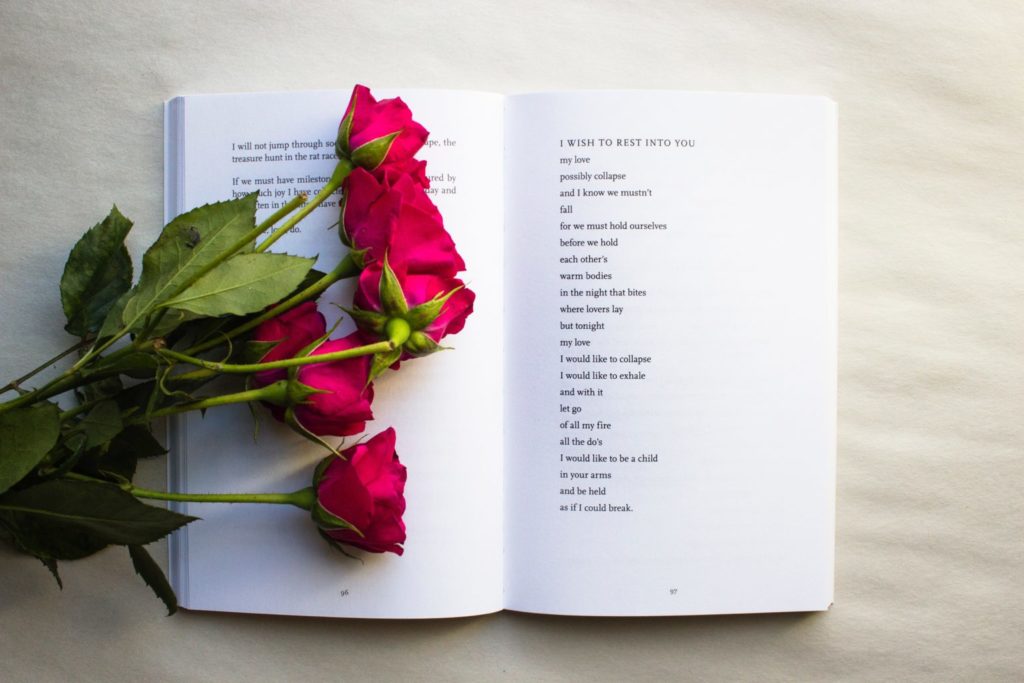
Are you struggling with poetry analysis in English?
To get those top marks on a poetry analysis task you need to discuss the form of the poem. Poetry is quite different from other text types in that they convey meaning using sound and structure not just words or phrases.
Here is a list of the top 12 poetic devices you need to know for your poetry analysis essay!
- Alliteration
This is the repetition of the starting sound of two or more words close to each other.
For example, The snake slithers through the slopes of the slick salt lake.
In this instance, the poet is mimicking the hissing sound a snake makes as well as creating imagery of the way snakes move. - Assonance
Similar to Alliteration, Assonance is the repetition of vowel sounds in words that are close to each other. It is often used to enhance imagery or emphasise an idea.
For example, ” Who knows why the cold wind blows Or where it goes, or what it knows.” – Kelly Roper - Couplet
Couplets are two lines of poetry that rhyme with one another and usually share the same meter as well. They add emphasis to those lines and are usually quite memorable as well.
For example, “Love looks not with the eyes, but with the mind;
And therefore is winged Cupid painted blind.” – William Shakespeare, A Midsummer Night’s Dream
- Enjambment
This is when a sentence is unfinished and runs onto the next line. Reading the line alone would not make sense and hence this device guides the reader to read the poem differently than they would expect. You can usually spot this by the absence of punctuation at the end of a line.
For example, “We were dancing—it must have
been a foxtrot or a waltz,
something romantic but
requiring restraint,” – Rita Dove
- Free Verse
This is poetry that does not follow a specific form or structure. Often it does not have any rhymes and can seem quite chaotic. The effect of using free verse is often to create a Stream of consciousness. Here is an example by Walt Whitman - Metre
This refers to the pattern of stressed and unstressed syllables in a line. Meter creates rhythm and melody in poetry. The most common meter used in poetry is Iambic Pentameter, which is meant to mimic the rhythm of normal conversation.
- Mood
Often confused with Tone, Mood refers to the atmosphere of a poem. To figure this out, think about the emotions conveyed and how a poem makes you feel. Poets create mood through imagery, rhymes, and form.
For example, a poem that creates dark, rainy imagery probably has a sad or somber mood to it. - Onomatopoeia
This refers to words that represent sounds. It is usually used to add excitement, fear, or drama. It is also very memorable for readers.
For example, “It went zip when it moved and bop when it stopped,
And whirr when it stood still.” -Chad Michael Trio
- Repetition
Quite self-explanatory, this refers to repeated words or phrases in poetry. It is usually used to create emphasis.
For example, “How the danger sinks and swells,
By the sinking or the swelling in the anger of the bells,
Of the bells,
Of the bells, bells, bells, bells,
Bells, bells, bells—
In the clamor and the clangor of the bells!” – Edgar Allan Poe
- Rhyme
This refers to the repetition of the last sound of two or more words, usually at the end of lines. This is usually used to create rhythm and make the poem more memorable.
For example, “Shall I compare thee to a summer’s day?
Thou art more lovely and more temperate:
Rough winds do shake the darling buds of May,
And summer’s lease hath all too short a date:” -William Shakespeare
- Rhythm
This refers to the sound of a poem. It is created through rhyme, meter, and repetition. It impacts the way a reader approaches the poem.
Fire and Ice by Robert Frost has rhythm that divides the poem effectively into separate parts. - Sonnet
These have 1 stanza and 14 lines. They usually follow the ABABCDCDEFEFGG rhyme scheme. They also are usually written in iambic pentameter.
Shakespeare’s Sonnet 18 is a great example of this.
Good luck with your poetry analysis essays,
We know you are going to shine like the sun’s rays!
